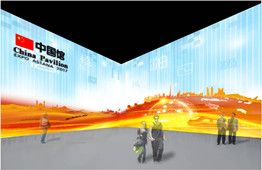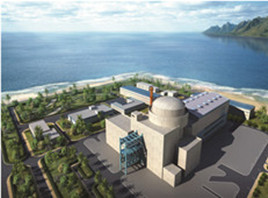Hunan
Changsha
Changsha, the capital city of Hunan province, is situated in the southeast region of China. With a population of 7.43 million, Changsha boasts a total area of 11,800 square kilometers, of which the urban area covers 1,910 square kilometers.
Strong momentum for economic development
In 2015, the gross regional product of Changsha reached 851 billion yuan and the overall regional strength ranked 6th among its counterparts. Industries such as engineering machinery, automobile and parts, new materials, biological medicine, cultural and creative industries and logistics are booming while further strengthening and enhancing the cultural and economic development, creating a better image and stronger influence.
Profound cultural heritage
As one of China's first batch of historic and cultural cities and one of the first group of distinguished national tourist cities, designated by the State Council, Changsha, with a history of over 3,000 years, boasts an abundance of world renowned cultural heritages, including Yuelu Academy and Mawangdui Han Tomb. Numerous historical figures were brought up in Changsha, such as Qu Yuan, a famous patriotic poet in Chu during Warring States Period (475-221 BC), Jia Yi, a distinguished politician in Han Dynasty (206 BC-AD 220), Chairman Mao Zedong, the founding father of the People’s Republic of China, and Liu Shaoqi, a vice-premier of New China, to just name a few.
A picturesque and a livable metropolis
Changsha enjoys a harmonious integration of mountains, islands and rivers, which add radiance to one another and present both the residents and visitors a picturesque landscape. As a global green city, the pilot city for ecological development and the national forest city, Changsha provides a livable environment for its residents with an improved urban infrastructure. The greenery coverage rate of Changsha reached 53.5 percent and good air quality rate reached 93.4 percent. Since 2008, Changsha has been honored as "the Happiest City" in China for six consecutive years.
Abundant resources in science, technology and education
The city is home to over 50 universities and colleges including National University of Defense Technology, Central South University and Hunan University. There are 52 academicians of Chinese Academy of Sciences and Chinese Academy of Engineering, 106 scientific research institutions and over 420,000 technicians in Changsha.
Convenient transportation and favorable location
Due to the city's favorable location, convenient transportation and logistics, Changsha, with its strong influence and as one of the key cities along the "Belt and Road" Initiative, is in an ideal position to serve as a bridge for the east and the west. Take its transportation as an example, the Beijing-Guangzhou high speed railway, the Shanghai-Kunming high speed railway and the Chongqing-Xiamen high speed railway all intersect in Changsha. With regard to flight, it only takes 1.5 hours to fly from Changsha to Hong Kong, meanwhile it only takes 3 hours by high speed railway. Changsha Huanghua International Airport has already opened nonstop flights to locations including, Frankfurt, Los Angeles, Seoul, Sydney and flights to other cities such as Paris with just one transfer in Shanghai. In terms of water transportation, Changsha works as an important inland port along the Yangtze River with an increased holding capacity. In the next 5 years, Changsha plans to be built into one of the center cities featuring brand new structures.
Extensive opening-up
The past few years have witnessed Changsha's deeper involvement in globalization and extensive opening-up. Changsha has, so far, established friendly economic and trade ties with 39 cities from 23 countries. More than 120 enterprises of Fortune 500 have invested or set up branches in Changsha.
Zhangjiajie
Zhangjiajie is located in the northwest of Hunan province and in the hinterland of the Wuling Mountain Chain. Its unusual geology forms rare and marvelous structures such as the "Zhangjiajie Landform" and the grand and mysterious Wulingyuan Quartz Sandstone Stick-Peak impressively reputed as "Earth's memorial". Zhangjiajie has been listed among the first group of world natural heritage sites and world geology parks in China because of its peculiar landforms.
Zhangjiajie astonishes with its grandeur. Tianmen Mountain is particularly significant, as it is acclaimed as the "the soul of Wuling Mountain Chain".
Though the steep and high mountain climb may be daunting, the magnificence of the climb itself is unforgettable. Standing on top of the mountain, a panorama of the city stretches out before you, providing the chance to feel experience marvels of nature and humanity in union.
The charm of Zhangjiajie also lies in its distinct seasons, which provide the land with abundant rain, dense forest as well as many and varied ecosystems and wildlife. With high ecological, aesthetic and scientific value and advantaged nature tourist resources, Zhangjiajie attracts tourists from both home and abroad.
Zhangjiajie is a minority agglomeration area with mainly Tujia, Bai and Miao ethnic groups. The population of ethnic groups accounts for 77% of total population. The national folk-custom tradition is long standing, of primitive simplicity, and the local customs and practices are intense and unique, resulting in powerful cultural inspiration. This bright culture is an important element behind the tourism industry of Zhangjiajie.
The natural environment of Zhangjiajie provides wonderful recreational opportunities. The scenic spot is a realm of clear and natural oxygen, with its negative oxygen ion concentration reaching 80-100 thousand unit/cm3. Further rich resources of high-vegetation、low-carbon and hot springs have laid a unique and enticing foundation for Zhangjiajie vacation tourism.
Since the local government began to develop tourism in the 1980s, Zhangjiajie has been persisting in the principles of "high starting point and high standards to develop tourism". The local government has spent a lot of money in improving traffic conditions. It has since become increasingly convenient for travelers to come to Zhangjiajie through the expansion of aviation, railways and expressways. Zhangjiajie is dedicated to improving tourism services and the relative service facilities. For example, some tourism projects have incorporated into the scenic spots, such as the sightseeing elevator built on the rocks, the sightseeing ropeway among the mountains and the plank road built along the cliffs. Zhangjiajie now owns 12 state-level scenic areas. Among them, two are 5A scenic areas and six are 4A scenic areas.
Zhangjiajie is also an international airport city, and the World Tourism Organization has established a sustainable tourism observatory in the heritage area. Now it has become one of the most important tourist destinations in China, making Zhangjiajie a place not just for China, but also the world.

 Province Events
Province Events Major Events
Major Events Highlights
Highlights
